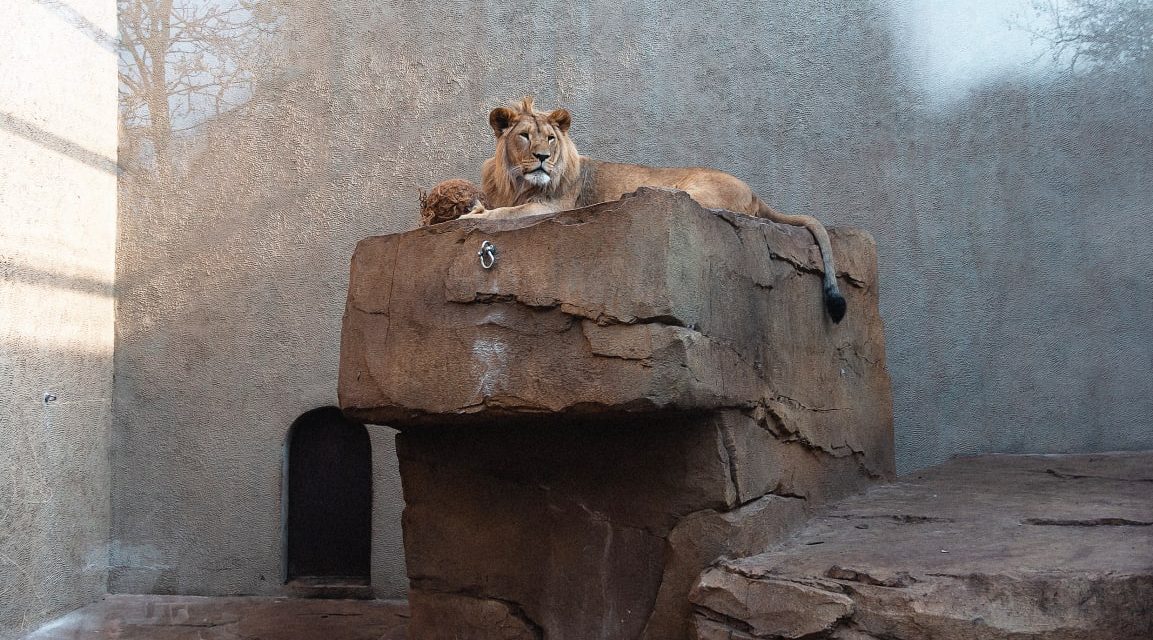Written by Brian Kateman / Fast Company
Should the future of educating the public about exotic animals be in sanctuaries and virtual zoos, not places where animals are kept in cages?
The high-profile death of the gorilla Harambe, who was shot dead in 2016 at the Cincinnati Zoo after a young boy fell into his enclosure, sparked a massive outcry—and conversation—about what is still one of the most hotly contested debates involving animal welfare. Just this past weekend, activists turned up at the Bronx Zoo to demand the release of Happy the elephant, chanting in unison that “Happy is not happy.” Indeed, the idea that keeping animals in captivity is morally acceptable has long been questioned by those who argue that zoos infringe upon animals’ freedom. In recent years, an increase in research on the ethics of captivity has helped to dispel the misconception that critics of zoos are simply anthropomorphizing the animals they say they’re trying to help.
But not everyone agrees. Robin Ganzert, CEO of American Humane, recently penned an essay in USA Today arguing that zoos “protect animals and restore endangered species, even as some activists seek to dismantle these arks of hope.” Is she right? Should animal advocates and conservationists be rallying around zoos?
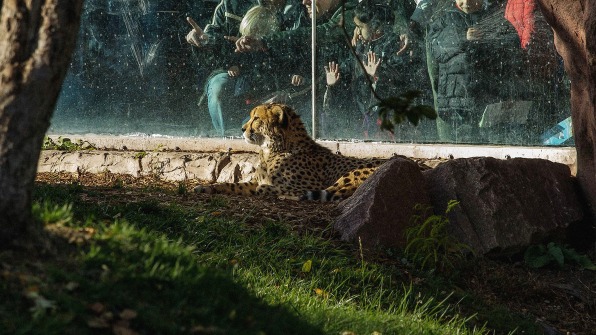
[Photo: Donna Lay/Unplash]
Not if we’re thinking about the animals themselves. Animals in zoos spend all day swarmed by crowds of people, many of whom are constantly flashing cameras in their faces, banging on glass and fences, and making loud or startling noises. This is anxiety inducing and frightening for most animals, but can be especially unsettling for animals that are nocturnal. In an interview with Slate, science historian and TED fellow Laurel Braitman argues there’s no denying that zoos are for people, first and foremost—not animals.Then there’s the issue of zoos striving to maintain genetic diversitywhile having limited capacity. In pursuit of this goal, one of two controversial tactics are employed. The first—commonly practiced in U.S. zoos—is contraception (birth control in the form of pills, IUDs, and vasectomies). But the use of contraception brings medical risks. Large cats with hormonal implants can be more susceptible to tumors, and elephants sometimes experience difficulty restarting their reproductive cycle when they are taken off contraceptives. Many people—such as Bengt Holst, director of conservation for the Copenhagen Zoo—also have argued that it’s inhumane, saying: “We’d rather they have as natural behavior as possible. We have already taken away their predatory and antipredatory behaviors. If we take away their parenting behavior, they have not much left.”
So, in Europe, rather than sterilize these animals, they are often allowed to breed and raise their young. Some of the offspring are then taken away from their parents and given to other zoos to avoid inbreeding. But this still leaves some babies unaccounted for. This “surplus” is dealt with through the second option: euthanasia. In 2014, the executive director of the European Association of Zoos and Aquaria estimated that between 3,000 and 5,000 animals are “management-euthanised” in European zoos in any given year. Indeed, in 2014, the Copenhagen Zoo received worldwide condemnation for killing a young giraffe and feeding his body to other zoo animals, simply because he was “surplus” from the zoo’s breeding program. The zoo later killed four lions—two adults and two young females—to make way for a new four-year-old male.
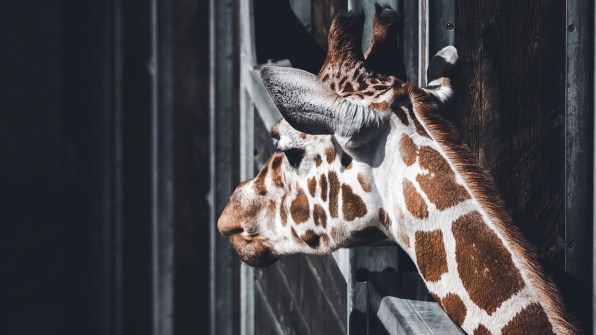
[Photo: Kasper Rasmussen/Unsplash]
Keeping animals in captivity also perpetuates the idea that it is acceptable to rob them of their natural freedoms for the sake of our own interests. In most cases, the way we keep wild animals in captivity is meaningfully different from how we interact with typical companion animals like dogs and cats, where there exists a much more reciprocal relationship borne from thousands of years of co-evolution between humans and the animals we’ve domesticated. (While in exceptional cases a small number of species—including some birds, fish, and rodents—may live comfortably as companion animals, there’s no doubt that zoo captivity, where the line between wild and domesticated is often blurred, is generally harmful for these species.)Many countries around the world embrace the concept of the five freedoms—internationally accepted standards of care stipulating that animals in captivity must be free from fear and distress, hunger and thirst, thermal and physical discomfort, pain, and injury and disease, and that they must be free to express their natural patterns of behavior. While most zoos try to facilitate this, there is widespread disagreement over whether any zoo setting can realistically satisfy these principles.
If you’ve ever visited a zoo, you may have noticed the way some animals—especially wild cats—tend to pace back and forth inside their cages. According to zoologists, it’s thought that this repetitive behavior (known as “stereotypies”) represents an attempt to cope with unstimulating or small enclosures. They are often seen engaging in this behavior before feeding time, as if they’re preparing to hunt for foodthat often just gets dropped right in front of them.
And it’s not just boredom that animals in captivity are prone to experience. It’s been proven that animals can develop mental health conditions much like humans—and a growing body of research is uncovering how captivity increases the risks of these illnesses. Concrete and confined spaces are known to cause depression and phobias in many animals, and one study found that chimpanzees in captivity were significantly more likely to show “signs of compromised mental health”—such as hair plucking, self-biting, and self-hitting—when compared with their wild counterparts, “despite enrichment efforts.”
Loneliness also takes a serious toll on captive animals. Researchers have found that African gray parrots who lived alone suffered more genetic damage than those housed with a companion. This damage often takes the form of shortened telomeres—caps on the ends of chromosomes that deteriorate with age or stress. In fact, many solo gray parrots had telomeres as short as birds 23 years older.
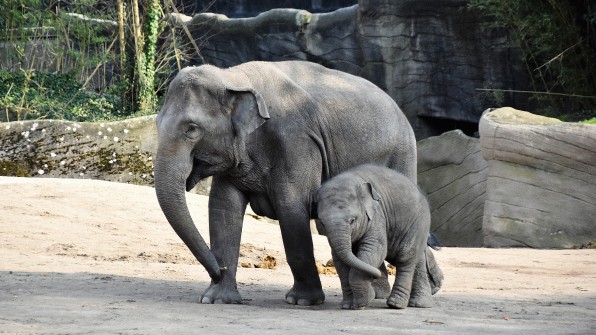
[Photo: Waldemar Brandt/Unsplash]
Research has even found that elephants suffer serious health problems and die much younger in captivity. Scientists have attributed this to a lack of exercise (their enclosures are often hundreds of times smaller than their habitats in the wild) and high stress levels from being transferred between zoos and separated from their mothers.For these and other reasons, according to a recent YouGov survey, a noteworthy 25% of all U.S. adults report that they are more opposed to zoos today than they were 10 years ago. Still, nearly half of the country says their views on zoos have not changed.
Supporters of zoos have several arguments for keeping animals in captivity.
Animals in captivity don’t know any better, some zoo proponents argue, so they couldn’t possibly be unhappy. This is a tough argument to buy, however. Wild animals have evolved over thousands of years to adapt to living in nature; it’s hard to imagine that living in unnatural environments that lack sufficient stimulation wouldn’t cause distress.
The case is similar with animals that are captured from the wild to be put in zoos—it’s difficult to argue that those animals don’t suffer from a severely limited habitat. The London Zoo, for example, states on its website that it justifies the presence of every one of their animals, “under the categories of conservation, research, and/or education.” However, it goes on to note that “in some very special circumstances we do get animals from the wild.”
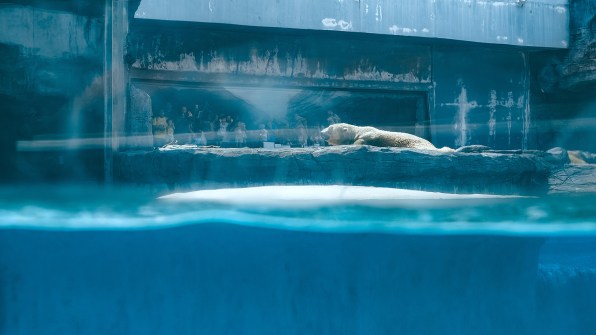
[Photo: Tinh Khuong/Unsplash]
As our attention increasingly turns to climate change and the threat of extinction facing many species—including species of turtles, gorillas, orangutans, rhinos, leopards, tigers, and elephants—it’s not surprising that people like America Humane’s Robin Ganzert are hoping zoos will save at-risk animals. Indeed, education around conservation has long been another one of the main justifications for zoos.But one study from 2014 found that only 34% of children surveyed before and after an unguided visit to the zoo reported having a positive learning experience, while around 15% had “learned” incorrect information. “Ask a dozen zoo directors why these places should exist today and you’ll get a different answer every time,” wrote Justin Worland in an examination of the future of zoos in Time. “Education, conservation, and science all come up. But the most common answer—fostering empathy for animals—is becoming harder to do while providing humane care to these animals.” Worland argues that children come away from zoos actually underestimating the problem of endangered animals. After examining a study by the Association of Zoos and Aquariums (AZA) that argued that zoos were educational, researchers from Emory University found that the paper exaggerated its findings, and concluded that there was no evidence to support the argument that zoos promote attitude change, education, or interest in conservation.
To be fair, zoos do play a role in conservation efforts. Using breeding programs, zoos can help to propagate a number of species, preserve genetic biodiversity, and reintroduce endangered species into the wild. When the Arabian oryx was hunted to extinction in the 1970s, the Phoenix Zoo helped introduce more than 200 calves from just nine antelopes into the wild. The population has since grown to around 1,000 individuals. Similar successes have been seen with the reintroduction of the black-footed ferret and the California condor. Animals in zoos are also often the preferred source for researchers hoping to learn more about how we can best save endangered species and restore and repair ecosystems. This is because zoo animals are more accessible to study, and there are fewer variables that could affect results.
But even these benefits may not justify zoos in general. For example, only one-fifth of the animals at the Smithsonian’s National Zoological Park in Washington, D.C., are endangered or threatened. On top of that, when species are released back into the wild, they’re often at a disadvantage due to behaviors they’ve learned in captivity, which can make them much more susceptible to dangers in the wild. The AZA has reported that of all the animals across its 228 accredited zoos, there are only 30 species at the center of specific programs designed to save them from extinction, most of which can’t be reintroduced into the wild. (Lori Marino, a psychobiologist and executive director of the Kimmela Center for Animal Advocacy, told Outside, “In American zoos there has never been an elephant that has gone from a zoo back into the wild . . . It is a one-way ticket.”) To make things worse, habitats in the wild are vanishing at an unprecedented rate. Without proper conservation work, animals that are part of breeding programs cannot be effectively reintroduced into the wild.
Zoo advocates also point out that many zoos contribute large sums of money to conservation projects in the wild. But relative to the amount of their total revenue, this simply isn’t true. One study found that the conservation investment from North American zoos was less than 5% of their income, and according to another source, at many zoos, only 1% of the budget goes toward conservation efforts. Still, this amount is not negligible, and as anthropologist Barbara J. King pointed out to NPR,“funding is a key and difficult issue in rethinking zoos.” However, critically examining the flaws with the current system is a necessary first step to uncovering “plausible [alternative] funding solutions.” King emphasizes that with a little vision, good conservation projects could be uncoupled from traditional zoos.
Just because a few good zoos exist doesn’t mean the concept of zoos is acceptable in a general sense. And these “good zoos” certainly don’t justify the existence of ones where animals are suffering from stress and mental health issues or where their enclosures are so far removed from the environment they have evolved to live in that the benefits of conservation and education are nullified. The fact of the matter is that all zoos perpetuate the damaging idea that humans should have unquestioned dominion over these animals. Alternatives already exist that can help achieve conservation efforts without the welfare issues of zoos.
One of these alternatives is animal sanctuaries. The main distinction between a zoo and a sanctuary is that the latter doesn’t breed animals; rather, they rescue them from places where they can’t be properly cared for. There’s also a difference in how much the animals are exposed to members of the public. For example, Adam Roberts, president of the Global Federation of Animal Sanctuaries (GFAS), has said that their sanctuaries don’t allow public contact with big cats. As a general rule, sanctuaries are often opened and operated by people dedicated to animal welfare. They exist for the animals, first and foremost, with their primary intent being to create an environment where animals that need rescue can have their care and their best interests prioritized.
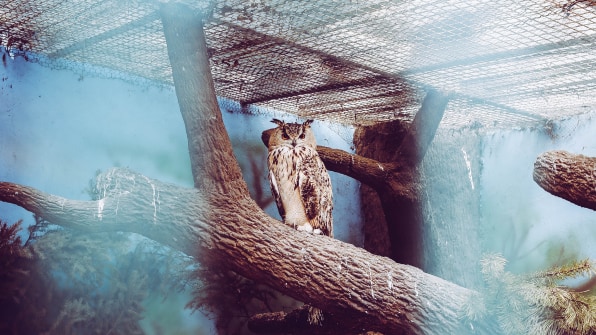
[Photo: Anastasia Dulgier/Unsplash]
It’s important to note that, like zoos, sanctuaries certainly have some variation in the level of care provided to the animals. But while there are some so-called “sanctuaries” that in fact exploit wild animals, this is not a reason to reject them as a solution. We should close these bad-acting operations and better allocate resources to ensure the ones that remain open are of the highest quality.The education vacuum left by zoos could be filled by the sanctuaries that are populated exclusively with rescued animals that enjoy human contact, which may include horses, donkeys, rabbits, goats, pigs, and cows. These sanctuaries could provide children with supervised exposure to animals through guided tours led by animal welfare experts. In fact, there are already examples of animal sanctuaries that work for both humans and animals. The Farm Sanctuary in Watkins Glen, New York, for example, cares for animals that have escaped abuse on farms and in slaughterhouses and auctions, and they have a hospital facility to treat sick and injured animals.
While a bit more speculative, virtual zoos are another possible direction. Prince Khaled bin Alwaleed, an entrepreneur, vegan, and member of the Saudi royal family, helped launch National Geographic’s Encounter: Ocean Odyssey in New York last year, which is complete with instillations of manatees, humpback whales, and stingrays. (Similarly to zoos, aquariums suggest that it is acceptable to confine animals—not only mammals and birds but also aquatic animals such as fish, which experience conscious pain—for humans’ gawking pleasure.) At the “Ocean Odyssey,” visitors can even “play” with sea lions. It’s been so popular that there are plans to open a second version in Riyadh, Saudi Arabia, this year. The project’s popularity and success in New York is encouraging. It proves there are creative solutions for zoos that the public seems to enjoy. Why not use technology to educate the public about animals without the animals having to pay the price?
Many zoos—and the staff they employ—try their utmost to ensure that the animals are looked after properly. But even the best zoos cannot expect animals to thrive in captivity. Educating the public and helping to save animals from extinction are complex problems, and they require conscientious solutions that prioritize the well-being of all the individuals involved. At the end of the day, it’s simply the case that the animals deserve better.
Brian Kateman is cofounder and president of the Reducetarian Foundation, a nonprofit organization dedicated to reducing consumption of meat, eggs, and dairy to create a healthy, sustainable, and compassionate world. Brian is the editor of The Reducetarian Cookbook (Hachette Book Group: September 18, 2018) and The Reducetarian Solution (Penguin Random House: April 18, 2017). He holds a master’s in conservation biology from Columbia University.

